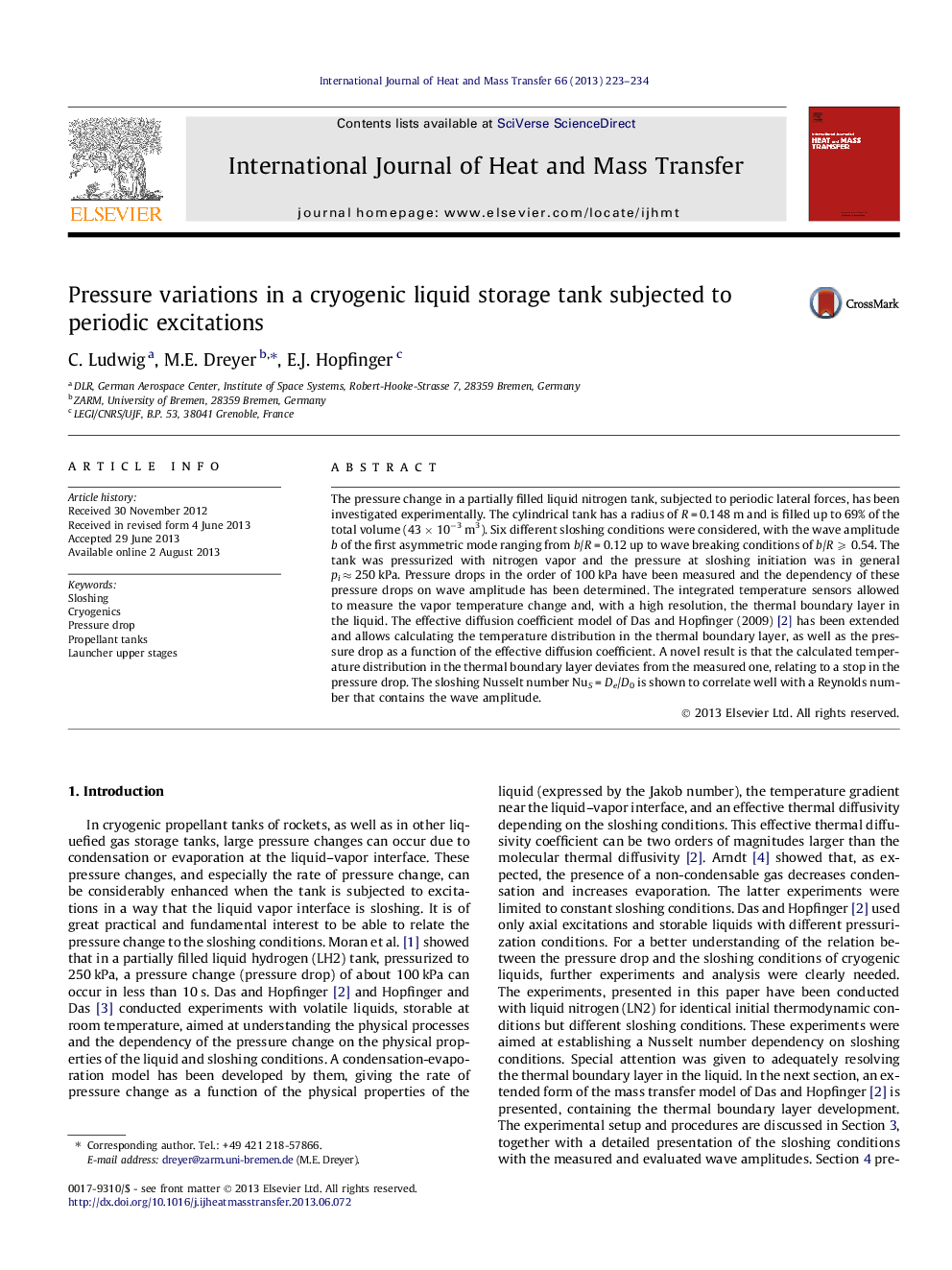| Article ID | Journal | Published Year | Pages | File Type |
|---|---|---|---|---|
| 7057960 | International Journal of Heat and Mass Transfer | 2013 | 12 Pages |
Abstract
The pressure change in a partially filled liquid nitrogen tank, subjected to periodic lateral forces, has been investigated experimentally. The cylindrical tank has a radius of R = 0.148 m and is filled up to 69% of the total volume (43 Ã 10â3 m3). Six different sloshing conditions were considered, with the wave amplitude b of the first asymmetric mode ranging from b/R = 0.12 up to wave breaking conditions of b/R ⩾ 0.54. The tank was pressurized with nitrogen vapor and the pressure at sloshing initiation was in general pi â 250 kPa. Pressure drops in the order of 100 kPa have been measured and the dependency of these pressure drops on wave amplitude has been determined. The integrated temperature sensors allowed to measure the vapor temperature change and, with a high resolution, the thermal boundary layer in the liquid. The effective diffusion coefficient model of Das and Hopfinger (2009) [2] has been extended and allows calculating the temperature distribution in the thermal boundary layer, as well as the pressure drop as a function of the effective diffusion coefficient. A novel result is that the calculated temperature distribution in the thermal boundary layer deviates from the measured one, relating to a stop in the pressure drop. The sloshing Nusselt number NuS = De/D0 is shown to correlate well with a Reynolds number that contains the wave amplitude.
Keywords
Related Topics
Physical Sciences and Engineering
Chemical Engineering
Fluid Flow and Transfer Processes
Authors
C. Ludwig, M.E. Dreyer, E.J. Hopfinger,
